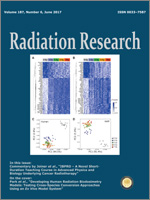In the event of a large-scale radiation exposure, accurate and quick assessment of radiation dose received would be critical for triage and medical treatment of large numbers of potentially exposed individuals. Current methods of biodosimetry, such as the dicentric chromosome assay, are time consuming and require sophisticated equipment and highly trained personnel. Therefore, scalable biodosimetry approaches, including gene expression profiles in peripheral blood cells, are being investigated. Due to the limited availability of appropriate human samples, biodosimetry development has relied heavily on mouse models, which are not directly applicable to human response. Therefore, to explore the feasibility of using non-human primate (NHP) models to build and test a biodosimetry algorithm for use in humans, we irradiated ex vivo peripheral blood samples from both humans and rhesus macaques with doses of 0, 2, 5, 6 and 7 Gy, and compared the gene expression profiles 24 h later using Agilent human microarrays. Among the dose-responsive genes in human and using non-human primate, 52 genes showed highly correlated expression patterns between the species, and were enriched in p53/DNA damage response, apoptosis and cell cycle-related genes. When these interspecies-correlated genes were used to build biodosimetry models with using NHP data, the mean prediction accuracy on non-human primate samples was about 90% within 1 Gy of delivered dose in leave-one-out cross-validation. However, tests on human samples suggested that human gene expression values may need to be adjusted prior to application of the NHP model. A “multi-gene” approach utilizing all gene values for cross-species conversion and applying the converted values on the NHP biodosimetry models, gave a leave-one-out cross-validation prediction accuracy for human samples highly comparable (up to 94%) to that for non-human primates. Overall, this study demonstrates that a robust NHP biodosimetry model can be built using interspecies-correlated genes, and that, by using multiple regression-based cross-species conversion of expression values, absorbed dose in human samples can be accurately predicted by the NHP model.
How to translate text using browser tools
22 March 2017
Developing Human Radiation Biodosimetry Models: Testing Cross-Species Conversion Approaches Using an Ex Vivo Model System
Jin G. Park,
Sunirmal Paul,
Natalia Briones,
Jia Zeng,
Kristin Gillis,
Garrick Wallstrom,
Joshua LaBaer,
Sally A. Amundson
ACCESS THE FULL ARTICLE

Radiation Research
Vol. 187 • No. 6
June 2017
Vol. 187 • No. 6
June 2017




